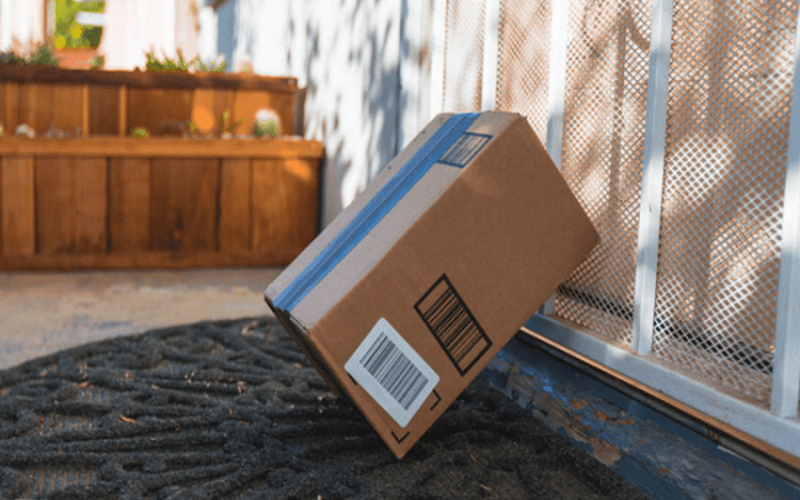Market Report
The Future of Sustainable E-Commerce Packaging to 2023

Smithers looks at the cutting edge in e-commerce packaging designs that minimise their impact on the environment.
A new market study from Smithers shows that the total volume of sustainable packaging materials in e-commerce will be $32.9 billion in 2018, up from $28.2 billion in 2017. E-commerce direct-to-consumer trade is expanding rapidly. This is yielding exciting new options for packaging, with major firms like DS Smith and Mondi setting up new divisions and product lines for this sales channel.
The Future of Sustainable E-commerce Packaging to 2023 charts how demand for sustainable materials worldwide will almost double in five years to reach $63.3 billion. This is creating opportunities for many material suppliers – in particular in corrugated board which is around 80% of this market.
E-commerce is generally good news for packaging, as item-level shipments to the customer typically require more packaging material than bulk deliveries to retail sites. Furthermore removed from a shop environment, the packaging a buyer receives can play a more important role in how they experience a brand. This means e-retailers and brands setting up their own e-commerce channels are will to invest innovative packaging that creates an impression on the consumer.
A central consideration in the 21st century is sustainability. E-commerce has been perceived negatively in the past for shipping small items in large pre-cut boxes, with an excess of protective elements that the customer then has to dispose of. This is not fundamental. As the market matures a new host of design options that minimise pack size, employ more sustainable materials, and are tailored to e-commerce sales channels are reaching the market.
Smithers identifies the following four design approaches that will be essential to furthering sustainability in e-commerce packaging across the next 5 years – delivering goods safely and transmitting the green credentials of brands and retailers.
Sustainability is often spoken about by key players in the e-commerce sector, be they brand owners, packaging suppliers, fulfilment agencies or other interested parties. It is now seen as an established requirement for all packaging, driven largely by consumer demand. However, to quote a key player in the e-commerce market, ‘product damage is the least sustainable option’. Given the demand for direct shipping to the consumer’s home and that the product arrive undamaged, sustainability in e-commerce packaging differs from that in traditional retail as it needs to strike a balance between ecological sustainability and product protection.
Consumers are used to seeing a single product in a retail pack on the store shelf, but are oblivious to the tonnes of used transit packaging awaiting recycling at the rear of the store. When this same product is delivered to the consumer directly, wrapped in a plethora of protective secondary packaging, they perceive it as environmentally damaging.
Another means of reducing contents moving within a box is to employ die-cut inserts patterns. These are growing in popularity as they can also provide an attractive way to display the contents on opening.
Die cut inserts can be plain brown or white board, the availability of inkjet printers mean short runs of these are increasingly being printed with brand identity or custom-printed with product specific variable information. Other options including flood coating in a complimentary or contrasting colour. This can reduce costs while providing vibrant colours and impact on the recipient, especially if an edge-to-edge single colour is used.
Laser cutters are now making it possible to cut more complex designs, without the need for dies, which again favours the short run work more prevalent in the e-commerce ordering.
Additional protective packaging has less of an impact on the environment – and creates less of a negative reaction from customers – if it optimised to be easy to recycle.
Most packaging suppliers and brand owners recognise that single-material solutions offer the best options in this area, especially if they are fully recyclable. This means that protective elements like moulded fibre inserts are gaining in popularity compared to harder to recycle parts, such as expanded polystyrene shapes and air pillows.
Adopting a mono-material approach for the whole pack make recycling easier – which consumers appreciate. This trend is pushing directly towards more fibre-based products at the expense of polymer protective formats.
Direct-to-consumer shipments of perishable goods – principally food – are a minor, but growing segment. Meal kits are a growing solution for time-poor modern consumers who wish to enjoy the experience of a premium home-cooked meal.
E-commerce shipment cannot depend on the same level of monitoring as professional cold chain logistics – especially in the last-mile delivery phase, which is more informal. This is creating a new demand for sustainable insulating materials.
Sun Basket, a San Francisco based healthy meal kit provider, has introduced new premium protein recipes, including organic grass-fed steaks, wild-caught halibut and jumbo shrimp. To ensure these reach the customer in the best condition and are still safe to eat the company is using an innovative insulation material from Sealed Air. The 100% paper TempGuard insulation is manufactured for post-consumer and post-industrial newsprint and it is fully recyclable via curb-side collection.
Adopting TempGuard has improved Sun Basket shipping temperatures and at the same time reduced its carton dimensions by almost 25%. The reduction in box dimension also enables 30% more boxes per shipment, cutting Sun Basket’s carbon footprint in distribution.
BillerudKorsnäs has invested in US start-up Vericool. It supplies corrugated box-based packages that can maintain products at cold temperatures during the critical 96 hours of last-mile delivery for pharmaceuticals, life science products, and increasingly food and meal kits.
The current and future market for all sustainable materials employed in e-commerce packaging is examined in detail in The Future of Sustainable E-commerce Packaging to 2023. This is supported by an exclusive dataset segmenting and forecasting this market by material type, end-use application, geographic and key national market.